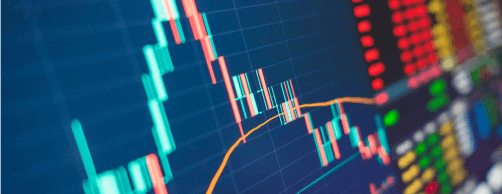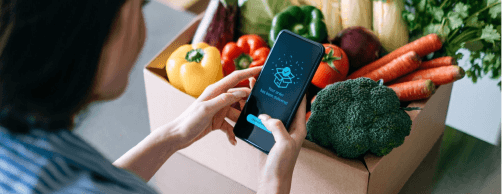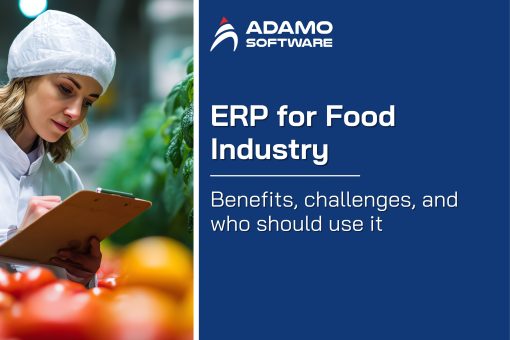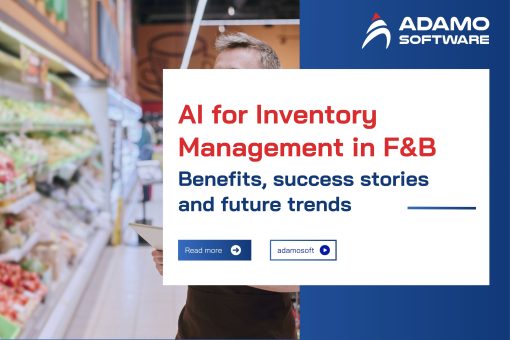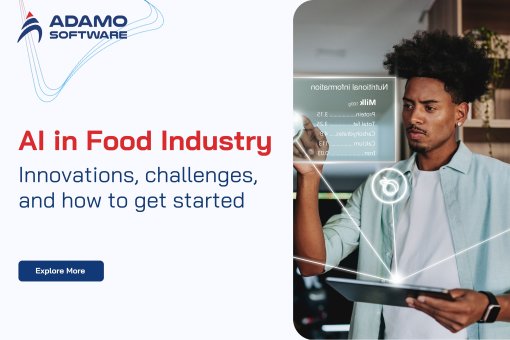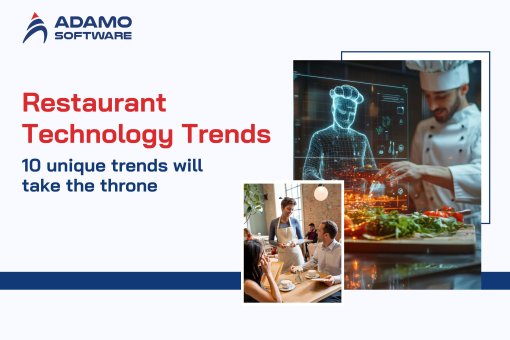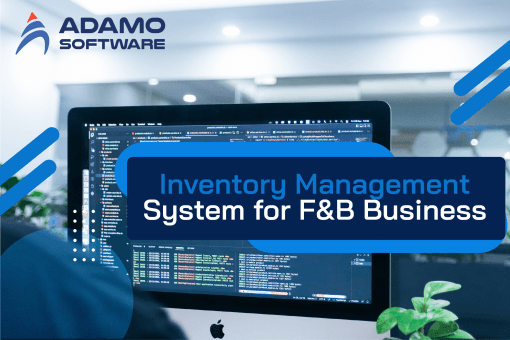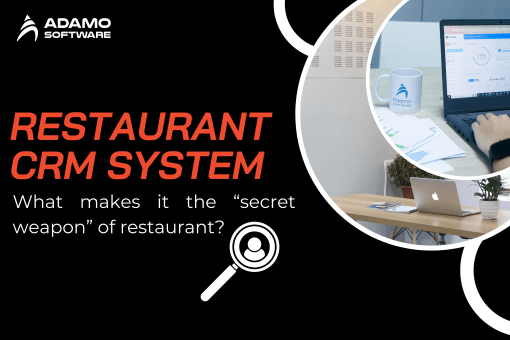Food Delivery Management Software: Trends, features, and expert tips
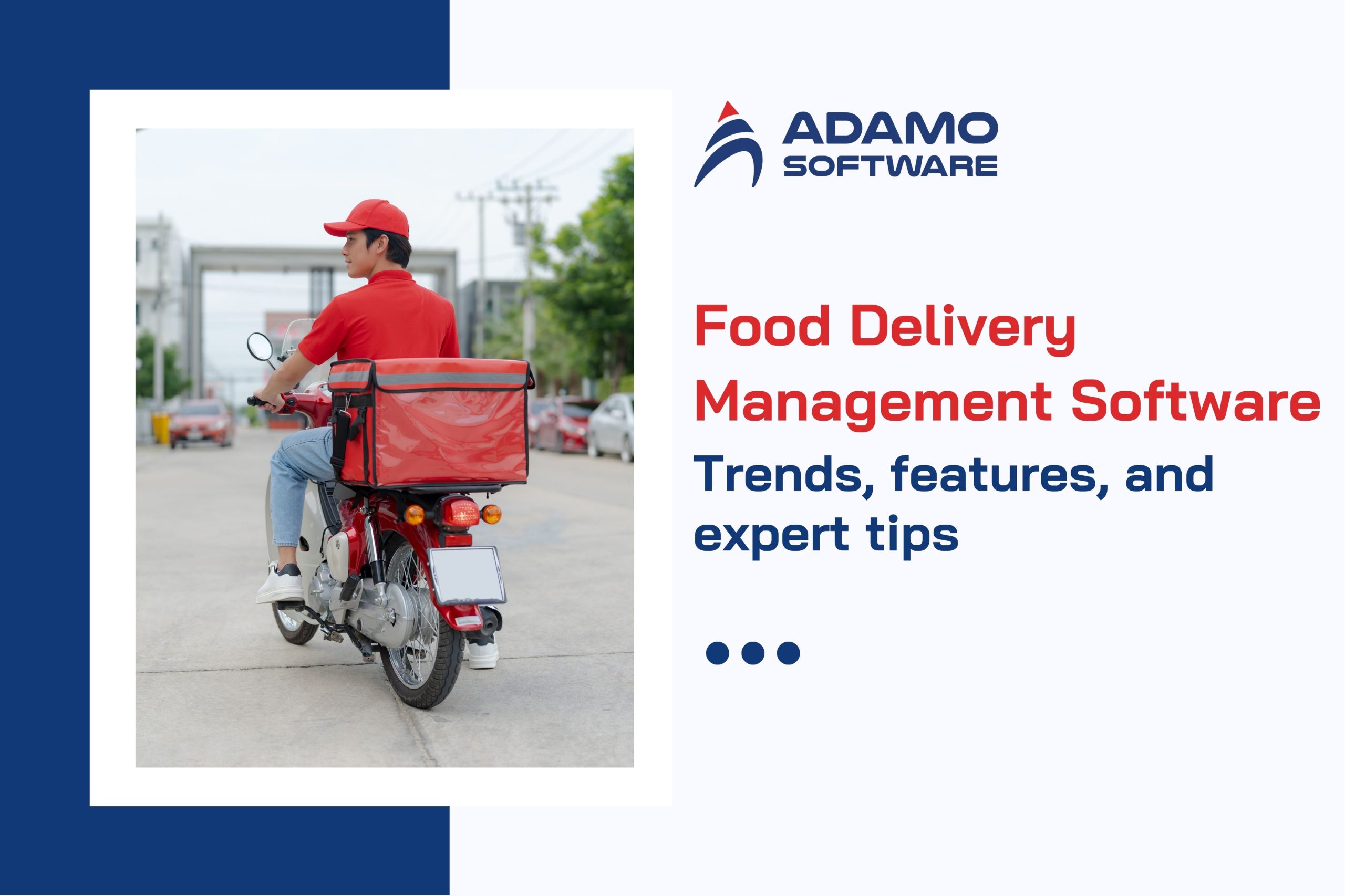
Discover how Food Delivery Management Software helps restaurants boost efficiency, reduce costs, and scale delivery with smart, data-driven solutions.
Food delivery management software has become essential in a world where speed and quality are paramount. It is software that assists restaurants, delivery services, and food companies with taking orders, tracking riders, processing payments, and resolving issues in real-time. It is a unifier of all. It brings food to customers in a timely and more efficient way.
The market demonstrates the importance of this. The digital food management segment is expected to grow as the business is projected to expand.
Such figures serve as an indicator of a significant need for effective systems. To the extent that an increasing number of individuals order dishes through apps and competition grows fiercer, establishing a tangible advantage. Any business that implements a solid Food delivery management software has a better chance on its end.
The appropriate software will save errors, enhance oversight in route, and performance of drivers. It bolsters confidence in your customers in your restaurant or delivery enterprise. It is forced to be a support, not an instrument.
In this article, we will cover:
- The actual definition of What Food delivery management software is.
- The latest trend and forecast on the market.
- The main characteristics that every system should possess
- Key advantages of Food Delivery Management Software
- Advice on choosing the software.
I. What is Food Delivery Management Software?
The food delivery management software is a computer program. It assists restaurants and food services in managing all aspects of the delivery process in a single location. It systematizes orders, allocates delivery jobs, manages drivers, and accepts payments along with providing reports. It acts as a command center.
An order is entered into the software when the customer makes an order online through the app or website. Then the system may:
- Validate the order
- Delivery personnel assign
- Plan the route
- Keep track of the delivery in real-time
- Record delivery status
- Provide notifications to customers
- Reconcile payments
All these steps are in a single system. Less work is done by hand; fewer errors are made, and services are delivered faster.
The essence of the Food delivery management software is that it combines these key modules:
- Order Management – More than just a web and app and call center and into a single dashboard.
- Dispatch and Routing Plans – Who drives where and when.
- Tracking & Notifications — Allows the customers and the restaurant staff to track the location of deliveries.
- Payment/Settlement – Settlement, commissions, payments, accounting.
- Reporting & analytics – Provides insights: most active hours, average delivery time, drivers, orders.
Restaurants and eateries will have too many spreadsheets, misdirected orders, delayed deliveries, and dissatisfied clients without such software.
The growth makes us realize that additional restaurants and delivery sites find it valuable to have a good Food Delivery Management Software system.
This kind of software cuts down mistakes in order. It makes drivers more efficient, cutting expenses, and enhancing customer experience. Any food corporation that focuses on deliveries cannot live without it.
II. Market insights of Restaurant Delivery Software
We will look at the increase in the restaurant delivery business, and why Food delivery management software is so vital.
The online on-demand food delivery services market in the world is projected to be US $161.4 billion in 2025 compared to approximately US 115.6 billion in 2021. That is an equivalent of a compound annual growth rate (CAGR) of 8.7%. (Cognitive Market Research).
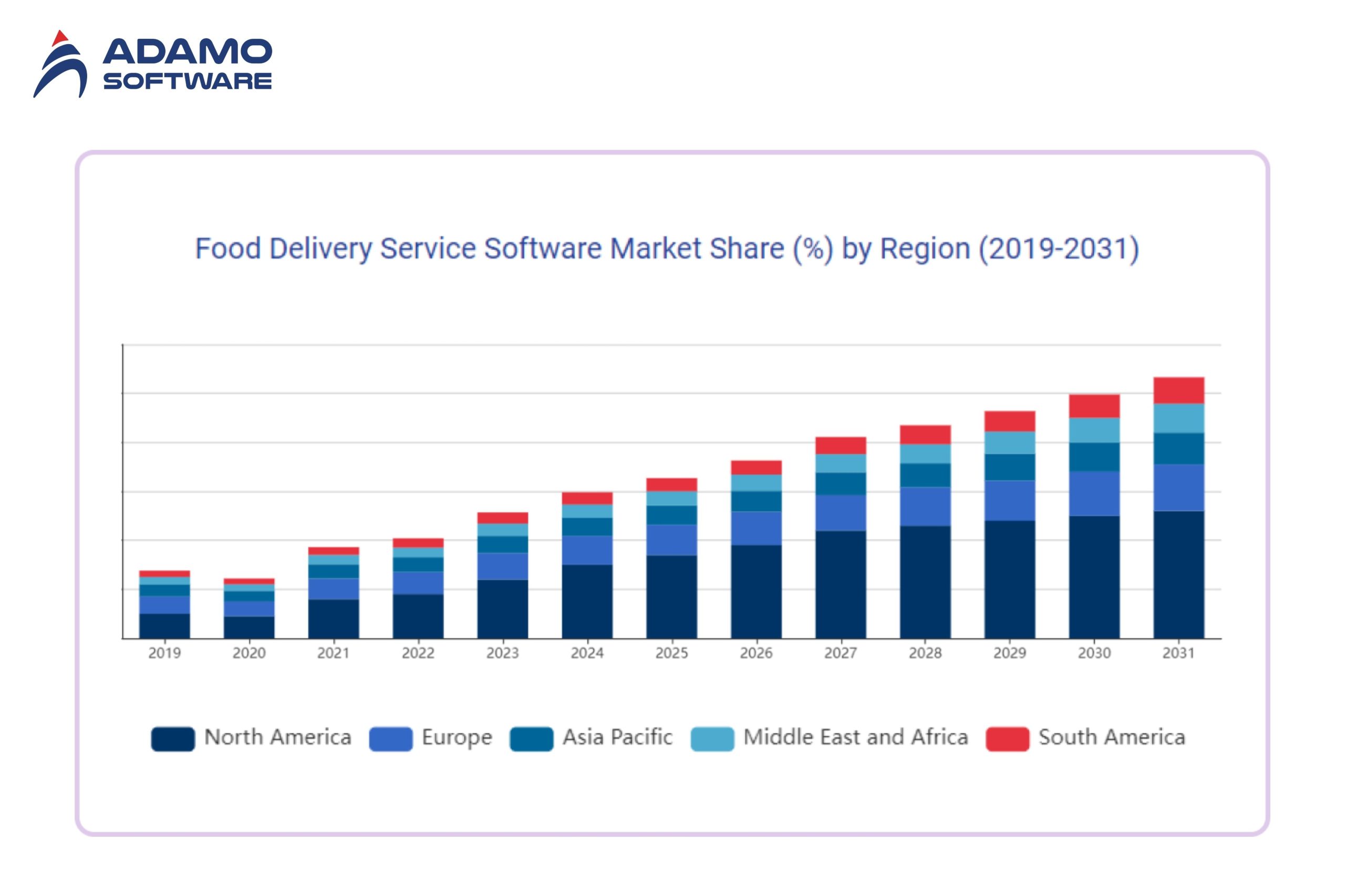
This indicates that a larger audience of customers would like to make orders via applications and online channels. With increased orders, restaurants need to expand their business. That is where the Food delivery management software comes in.
The expansion does not take place everywhere. The differences are observed in regions and countries:
- There is a high demand in North America. Online food delivery in the U.S is estimated to experience a CAGR of 9.6% between 2025 and 2030. (Grand View Research)
- Asia-Pacific is growing at a higher rate due to the high population, the increase in smartphone usage, and the introduction of further digitalization. The region will likely have recorded a high growth rate compared to other areas.
- Other markets, such as Europe, Latin America, the Middle East, and Africa, are also contributing to the number of individuals in these regions using online ordering.
The factors that have contributed to this growth:
- Convenience demand- individuals desire food speedily and effortlessly.
- Internet/smartphones – More people are connected and thus making it easier to place orders.
- Enhanced technology – improved applications, smarter routing, improved tracking.
- Platform competition – they offer better services, a greater range, and shorter delivery times.
- Virtual brands and cloud kitchens – they need to have effective delivery systems.
Investing in good Food delivery management software is nice to have and a strategic necessity. Lack of it can make a restaurant face delays, inefficiency, or errors.
III. What are the must-have features of Food Delivery Management Software?
In any restaurant or food business, Food delivery management software is the stronghold. It enables all things to be in order, including the ordering of things, to the eventual delivery.
The suitable system makes a complicated workflow simpler, more timesaving, and improves its efficiency and customer loyalty.
A complete list of what every modern delivery management solution should contain, and why each of them is important, is provided below:
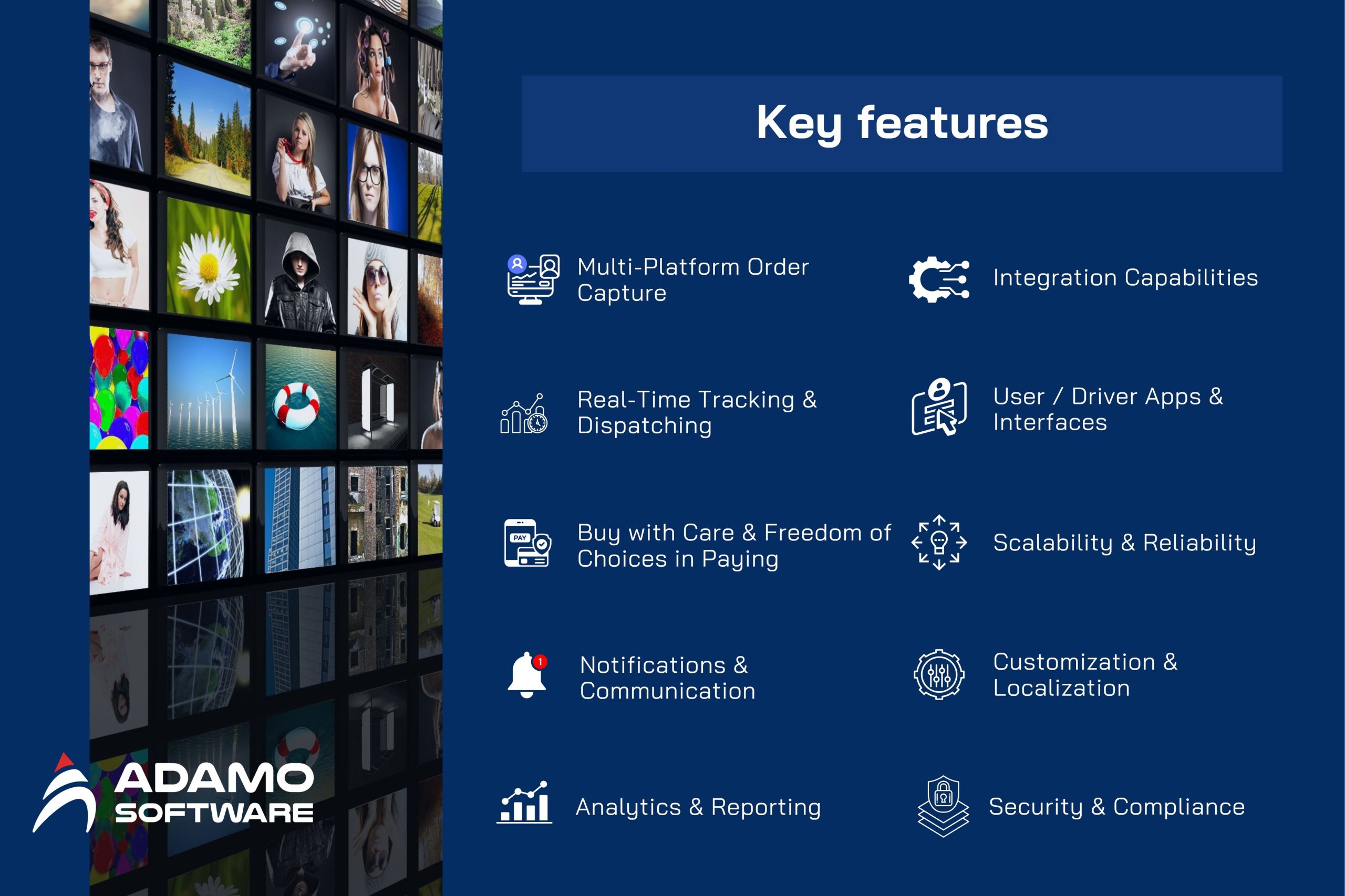
- Multi-Platform Order Capture – Integrates all the orders made through applications, websites, and telephones into a single dashboard.
- Real-Time Tracking & Dispatching – Streamlines routes of the drivers and allows customers to monitor all the deliveries.
- Buy with Care and Freedom of Choices in Paying – Accepts various payment options and secures financial information.
- Notifications and Communication – Notifies all people with real-time notifications and two-way communication.
- Analytics & Reporting – Provides restaurant managers with valuable data with which to make smarter decisions.
- Integration Capabilities – Integrates with POS, CRM, and inventory systems.
- User / Driver Apps & Interfaces – Enable everyone in their respective user groups to easily do their duties.
- Scalability & Reliability – A guarantee that the operations will run smoothly with an increase in order volumes.
- Customization and Localization – Adapts to local language, currency, and tax regulations.
- Security & Compliance – Ensures the safety of customer data and that it complies with the standards in the food industry.
1. Multi-Platform Order Capture
The system employs multiple platforms to capture orders. The multi-platform order capture will use more than one platform to receive orders. Nowadays, restaurants are ordered through delivery apps, websites, kiosks, and phone calls in the multi-channel market. All these orders are input to food delivery management software, which is a single dashboard. This prevents order duplication or missing orders and ensures that the staff can handle the orders at a quicker pace.
More food businesses continue to use manual spreadsheets to track orders. This reduces the response time and increases the number of human mistakes. Through automated order capturing, restaurants are able to have full visibility and enhance accuracy.
2. Real-Time Tracking & Dispatching
Customers have come to demand transparency at all stages. It is possible to approach tracking their food in real-time using GPS positioning, and restaurant managers can follow the position of their drivers, the time of delivery, and the efficiency of routes.
High-tech dispatching systems provide a choice of optimal drivers in relation to the distance, delivery time, and workload using AI. This saves time and fossil fuels.
3. Secure & Flexible Payment System
Contemporary clients desire convenient, fast, and secure payment services. Food delivery control software must help with the cards, wallets, QR payment, and cash-on-delivery, and should encrypt all financial information.
Moreover, the system should automatically process refunds, commissions of drivers, and invoice reconciliation. In a 2025 report, over 70% of all food orders around the world were digitally paid, indicating the necessity of having smooth integration of online payments.
4. Notifications & Communication
Communication eliminates confusion. Customers are kept informed with automated messages of their order status, whether it is confirmed, out for delivery, or delivered. They can easily reach out to the restaurant or their driver by using chat or call-in functionality.
Good communication also minimizes order cancellations and enhances satisfaction. Restaurants’ repeat orders increase, indicating that it generates loyalty.
5. Analytics & Reporting
Data drives decisions. Food delivery management software must be able to offer reports on volumes of orders, delivery time, revenue, and driver performance. Managers can observe peak times, routes that are slow, and strategize promotions.
More restaurant operators have started to invest more in data analytics. This is how significant the insistence-based operations were.
6. Integration Capabilities
A good system would be easily integrated with POS, CRM, and kitchen display systems. This provides one continuous cycle of order entry, delivery, and payment.
Nevertheless, operators have difficulties with poor API integration. This causes them to do the same job more than once and have uneven reporting. As such, the tools should be able to communicate with each other via an open API.
7. User / Driver Apps & Interfaces
An interface of restaurant employees, clients, and drivers has individual dashboards to enhance usability. Drivers may see the means of delivery. Customers may see progress. The restaurant personnel may see the activities in real time.
The interface is well designed as another factor of time wasted during training is minimized. Business ventures that distribute their food using simple-to-use Food delivery management software can process more orders on average.
8. Scalability & Reliability
During weekends, holidays, or even when you are getting a promotion, your system should be able to match the demand. Cloud architecture with cloud services can scale without failure or loss of data.
With scalable systems implemented by restaurants, the number of delivery delays during peak hours is reduced. This justifies the importance of a robust backend.
9. Customization & Localization
In every market, there are specific delivery policies, languages, and currencies. The most appropriate Food delivery management software fits well into local tax regulations, payment procedures, and delivery charges.
As the number of cross-border delivery platforms in Asia and Europe increased in 2025, localized menus and currency solutions were considered the key to customer comfort.
10. Security & Compliance
The secrets of names, telephone numbers, payment information, etc., must be guarded. The software should comply with information-privacy regulations like GDPR or local analogues. It should provide multi-factor authentication for personnel access.
Food-tech companies believe that cybersecurity protection is equally important for performance.
Altogether these features allow restaurants to receive more orders with lower stress, more customer confidence, and make more data-oriented and quicker decisions.
Strong Food Delivery Management Software is not merely a tool. It is the online engine that propels the whole delivery experience.
Explore Our Tailor-made Software Development Solutions
We are confident in providing end-to-end software development services from fully-functioned prototype to design, MVP development and deployment.
IV. How restaurants benefit from an On-demand food delivery app
A restaurant using Food delivery management software will achieve an additional digital platform and a full ecosystem of automation, information insights, and customer relationship methods.
The fundamental advantages are discussed below:
- Extended Reach – Target more customers via mobile and web platforms.
- Operational Efficiency – Automate orders and eliminate manual mistakes.
- Smarter Business Decision-making – Deploy analytics to make wise business decisions.
- Enhanced Customer Relationship – Better loyalty via personalization.
- Decrease where it works – Automate and conserve.
- Competitive Edge – Leverage technology to be a leader.
Expanded Reach
The contemporary Food delivery management software enables restaurants to reach new customer segments. It unlocks the possibilities of their mobile apps and online ordering options. A report by Statista 2025 indicates that the population of online food university consumers will reach more than 2.85 billion by 2025. Such a tendency implies that restaurants with more developed software can reach way beyond the local patrons.
Operational Efficiency
The automation minimizes the errors in orders and shortens order preparation and delivery time. POS, rider tracking, and order routing are provided in a single dashboard on systems such as Enatega or StackFood. Automation offers the potential to reduce fulfillment charges and enhance delivery precision.
Improved Decision-Making
Food delivery management software based on data-driven analytics provides restaurant owners with real-time data regarding the preferences of customers, peak times, and menu performance. Restaurants that employ analytics tools achieve a higher customer retention rate.
Better Customer Relationship
By using automated marketing, personalization in offers, and loyalty programs, restaurants enhance interaction and confidence. Customers value convenience, and three out of 10 diners confirm that personalization is part of the loyalty choice.
Reduction in Operational Cost
The computerization of restaurant processes reduces labor and logistics expenditures. Functionalities like inventory notification, e-receipt, and automated dispatch eliminate wastages and delays. A Grand View Research 2025 study estimates that the average cost of the annual operations is 15-20% saved by restaurants using the digital delivery system.
Competitive Edge
Faster delivery, improved UX solution, and the productivity of the restaurants using Food delivery management software make them distinct. Inbuilt analysis and automated reporting allow them to have a clear picture of what is performing and what requires change. It is worthwhile to implement technology early enough to secure a stronger brand in the market and to be scalable in the long term.
V. Pro tips to choose the best Food Delivery Management Software
There are numerous possibilities of selecting the appropriate Food delivery management software available on the market. Nonetheless, with the help of disaggregating your decision into concise criteria, you can identify a system that is compatible with your business goals and will grow with your business.
Here’s what to focus on:
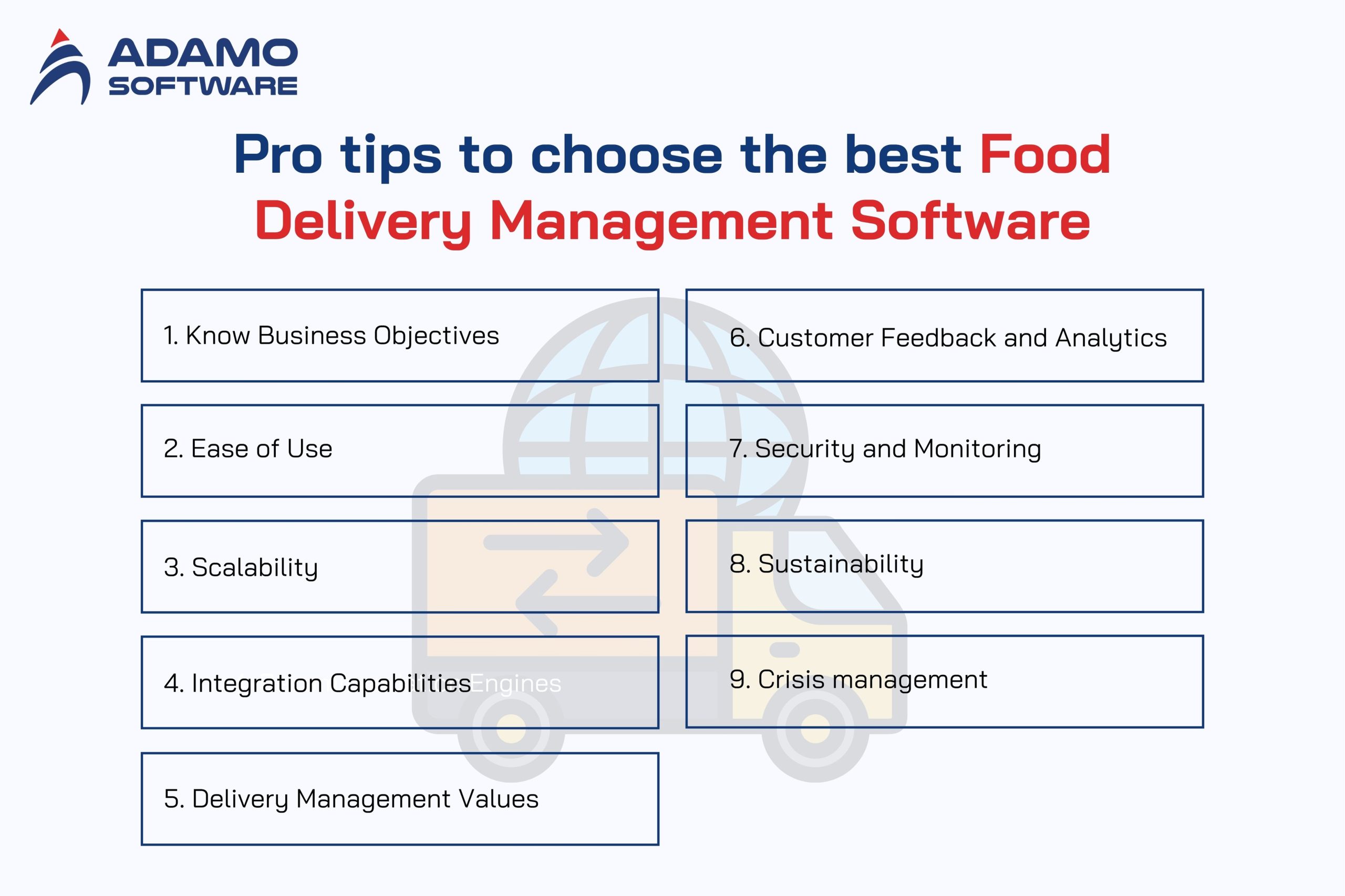
- Know Business Objectives – Determine the scale and ambitions of your restaurant.
- Ease of Use – Put more emphasis on a clean interface and easy work processes.
- Scalability – Ensure that it expands with your business.
- Integration Capabilities – Web-linked to your accounting and POS.
- Delivery Management Values – Optimization and real-time automation.
- Customer Feedback and Analytics – Use insight to make better decisions.
- Security and Compliance – Keep sensitive payment and user data secure.
- Support and Customer Service – It must be dependable when required.
- Cost and Value of Money – Find a balance between affordability and functionality.
Understand Business Needs
The needs of all restaurants are diverse. Before investing, clarify whether a small-scale delivery system is required or if an enterprise-level solution must be made. The reason this was the greatest challenge was the ability to find technology that fits the size of their business and the systems they already have. It is better to clarify needs at the beginning to avoid matching software costs.
Ease of Use
An effective Food Delivery Management Software must make operations more complicated and facilitate them. Users of friendly delivery systems spend less time training staff. This pointed out that restaurants that resorted to a delivery system that is easy to use have cut down on training. The basic and uncomplicated dashboard will ensure that restaurant employees and drivers deliver goods with fewer errors and in less time.
Scalability
Select software able to expand with your business. With increased demand, the system should be capable of managing increased order volumes, new branches, and new features without reducing performance. Scalable delivery software can increase the ROI in the long term because of lower migration and upgrade costs.
Integration Capabilities
Good integration with POS, inventory, and accounting software is essential for efficiency. Leveraged systems reduce the chances of the error of iteration of information and concentrate business data. The order processing in restaurants using integrated systems takes less time to process and there are fewer data errors.
Delivery Management Features
These are characteristics such as route optimization, scheduling of drivers, and tracking in real-time. These enhance the speed of delivery and customer satisfaction. More customers will reorder more often with a restaurant that provides live delivery tracking.
Customer Feedback and Analytics
Data is the key to the improvement of the business strategy. Teams’ Advanced Food delivery management software gathers customer satisfaction, buy records, and purchase trackers. Data-driven restaurants increase the rate of repeat orders faster than non-analytic ones.
Security and Compliance
Security cannot be an afterthought. The software should also abide by the international laws of data protection and employ encryption to secure customer data. IBM Cost of Data Breach Report 2025 states that the average cost of a data breach in the hospitality industry has reached USD 3.4 million. Choosing a safe system will avoid these risks and create confidence in the customers.
Support and Customer Service
Technical problems may hamper the operations, and thus quality support is very important. Find providers of 24/7 support, documentation, and onboarding services. Restaurants that can react to the situation through tech support identify software problems quickly, avoiding discontinuity and loss of revenue.
Cost and Value for Money
Lastly, manage yourself with your budget. In addition to the subscription charges, estimate the cost of setup, maintenance, and upgrade costs. The profit margin of a business increases when the business invests its revenue in reliable delivery software as the business tends to become more efficient with time.
VI. Final thoughts
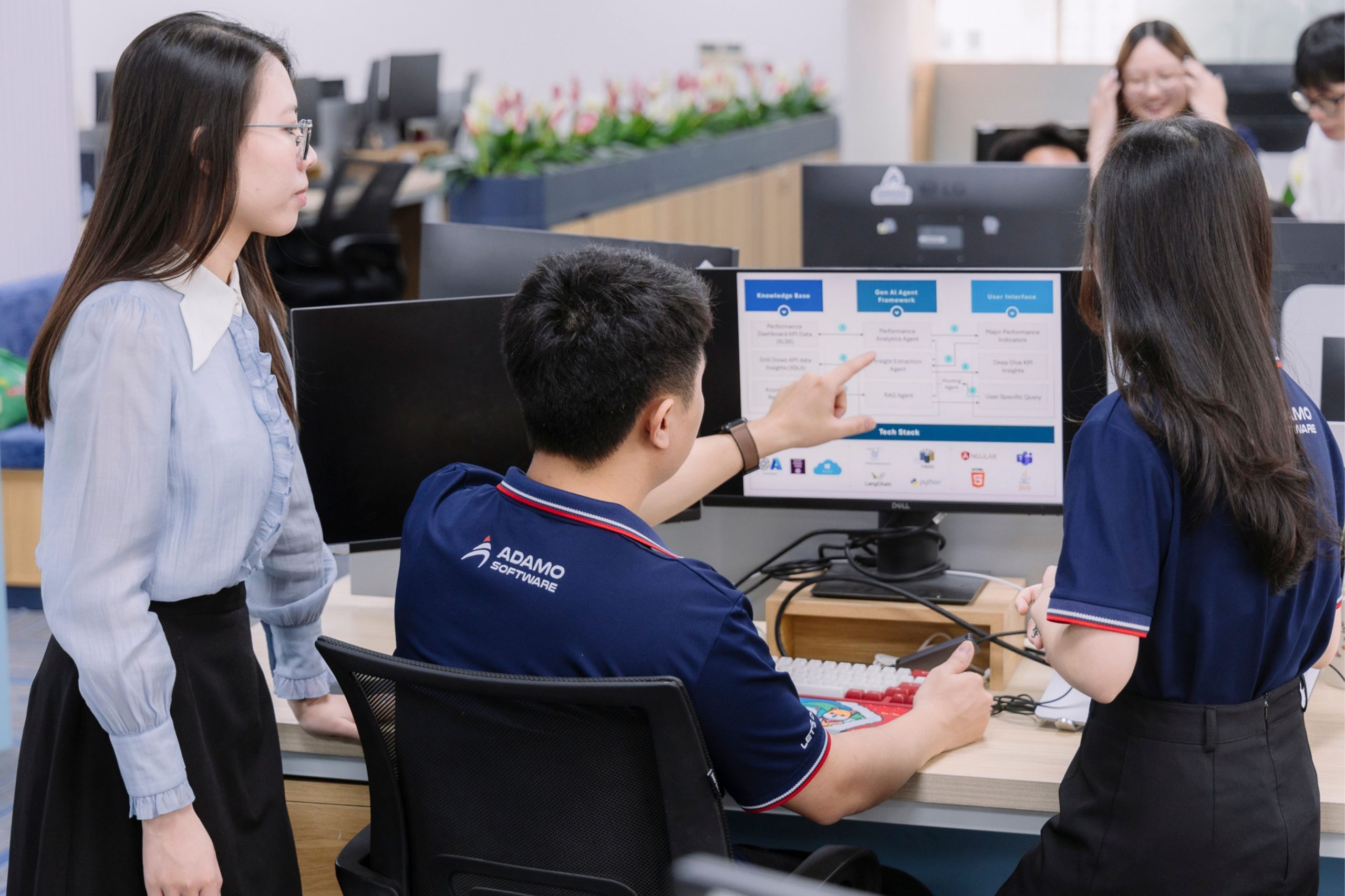
In Adamo Software we also trust that Food delivery management software is not a tool but rather the gospel behind developing a smarter, quicker, and customer-oriented restaurant business. Most restaurants in the modern competitive food service sector are challenged by slow turnover, mistakes, and missed opportunities whenever operating under a manual system. However, a good digital solution makes all the processes, starting with the order placement to the actual delivery smooth, efficient, and open. Automation, real-time analytics, and customer personalization are the backbone of the food delivery future.
With technological advancement, the Food delivery management software will remain as one that provides restaurant owners with data-driven knowledge. It helps them to make better decisions, enhance their efficiency, and develop patron relationships.
At Adamo Software, we assist businesses in changing and evolving with self-confidence. You may be a tiny community cafe or a vast chain of restaurants. Our customization-based Food delivery management software will be tailored in line with your aspirations and cut down expenses and generate an excellent customer experience. Appropriate technology is not merely a benefit, but a key to developing the digital economy in the long term.
FAQs
1. How does a food order management system benefit small restaurants?
A food order control system enables smaller restaurants to achieve a larger number of orders with reduced staff since it automates work and simplifies communications. The restaurant owners will minimize the manual process mistakes. They can accelerate the operation with the appropriate Food delivery management software.
2. Can order management software integrate with online food delivery platforms?
Yes. The food delivery management modern software is easily integrated with third-party systems like Uber Eats, GrabFood, or Deliveroo. Seamless integration implies that the menus, prices, and orders remain aligned among systems. This means that multi-channel software integrations have become an important element of managing in-house.
3. Is order management software easy to use for restaurant staff?
Absolutely. Delivery management software Good Food delivery is also developed to be easy. There are easy-to-use intuitive dashboards, drag-and-drop features, and a mobile-friendly design. It enables kitchen and delivery workers to learn within a short period of time.
4. How does food order management software improve customer satisfaction?
When food is received on time and ordered, customers are more delighted. The management software for food delivery can help track orders in real time, in updates. Delivery routes can be faster – all of which enhances reliability.
5. Can food order management software help reduce food waste?
Yes. Food delivery management software will allow predicting demand and avoiding overstocking, engaging the inventory and sales information in the process. This decreases the wastage of food and saves money.
6. Is order management software expensive for small businesses?
Not always. Numerous Food delivery management software solutions currently provide flexible subscription options so that the restaurants will be able to start off small and scale as they expand. Independent restaurants will use cloud-based software. It is because they will cut down the initial costs and maintenance will also decrease.
7. How scalable is order management software for growing restaurants?
One of the most robust advantages of the Food delivery management software is scalability. Despite having one or ten locations, the appropriate platform has no trouble receiving more orders, more menus, and more delivery areas. Restaurants that embraced scalable systems had an easier time growing, as compared to legacy tool usage.
8. What kind of customer support can I expect from order management software providers?
Top Food delivery management software providers have also been providing 24/7 technical support, training, and monitoring performance. The restaurant operators were most concerned with the responsiveness of the vendor as the key aspect of overall post-implementation satisfaction.
9. Is Food Delivery Management Software scalable?
Modern Food delivery management software is scalable, yes. Cloud-based systems can be easily expanded to support additional stores, employees, and increased levels of delivery. The online volume of orders by those businesses that used scalable technologies increased every year.
10. What types of payment options are supported by Food Delivery Management Software?
The present Food delivery management software can accept various payment options – debit and credit cards, e-wallets, QR codes, and online banking. Some go to the extent of providing region-specific gateways such as PayNow or GrabPay.


